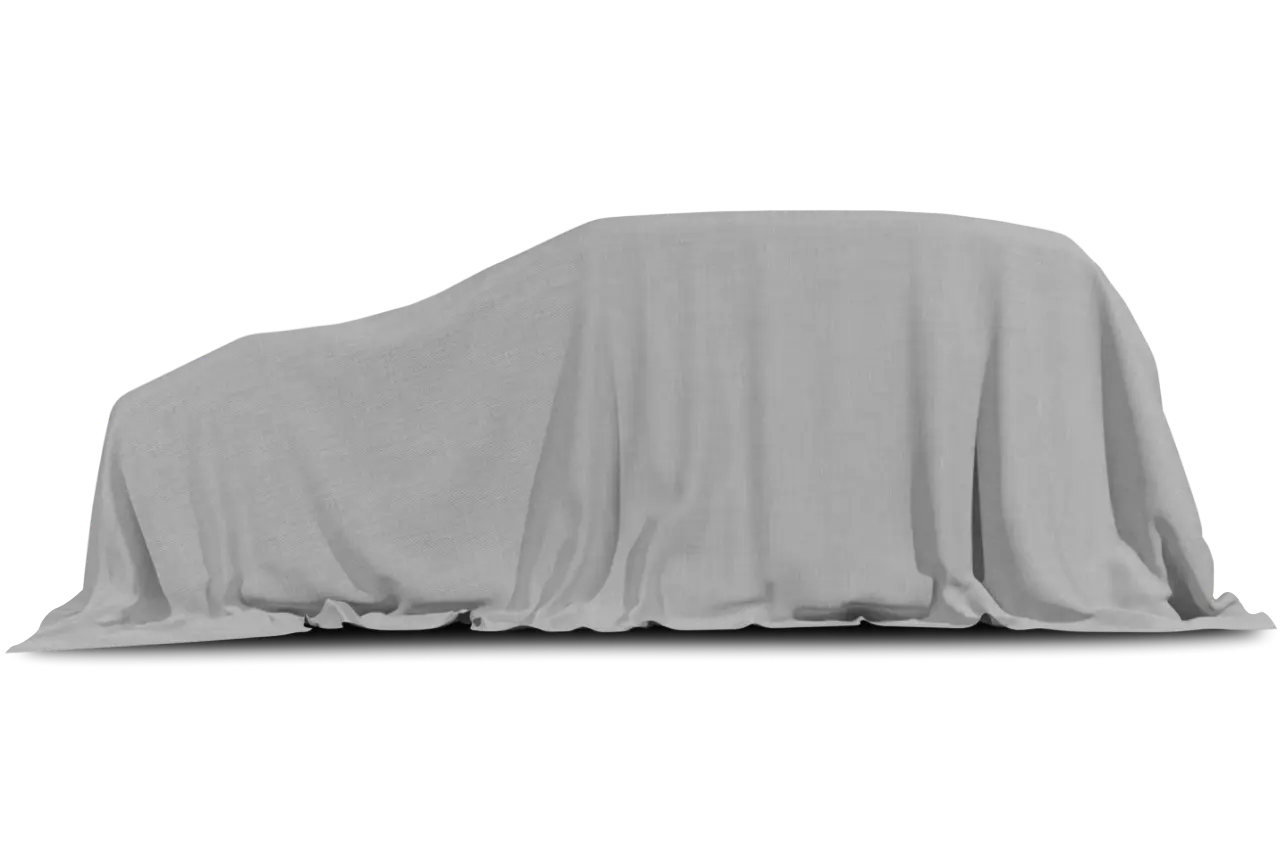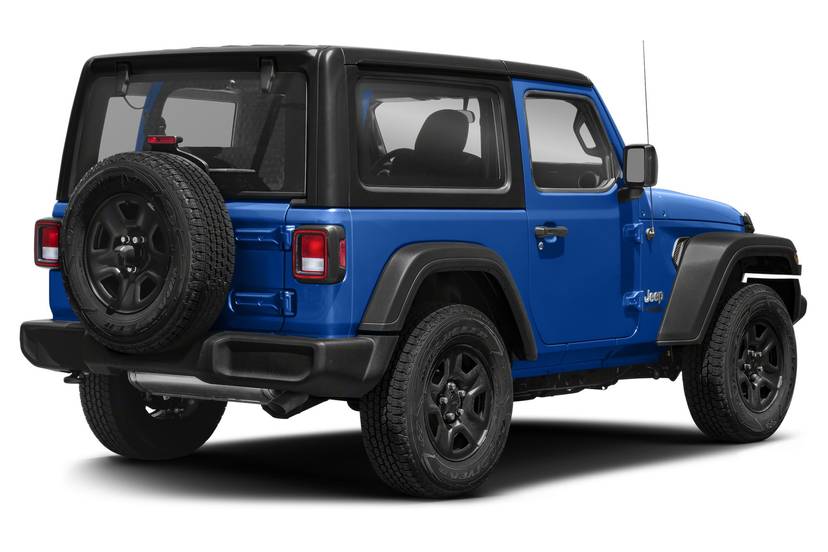
I have a problem with the saying “It’s a Jeep thing; you wouldn’t understand.” Often asserted by hardcore Jeep fans, it’s part celebration, part explanation and part admonition. Sure, it’s a little bitchy and defensive, but that’s not why I object. The problem is that it’s outdated. No longer is there much to misunderstand about most Jeep models, from the Compass to the Grand Cherokee, whose sophistication compares more favorably to competitors. The saying should be, “It’s a Wrangler thing; you wouldn’t understand.” This I agree with. The legendary Wrangler off-roader is a singular entity. I understand it, as do many other rabid fans, but you might not.
Recent upgrades make the 2013 Jeep Wrangler more appealing for the true believers — and maybe even some agnostics — but they won’t be enough to sway nonbelievers.
The Wrangler is available in two body styles: the two-door and the Jeep Wrangler Unlimited four-door (see the specs). Both are convertibles, though it’s not always obvious to the casual observer because an optional removable hardtop is available in lieu of the traditional soft-top. The three shared trim levels are the Sport, Sahara and Rubicon. The Wrangler Unlimited adds a Sport RHD above the Sport. In the higher two versions (Sahara and Rubicon), the fender flares and removable hardtop are body-colored.
Changes for 2013 include redesigned seats, an auto-dimming rearview mirror, new wheel designs for Rubicon and Sahara trim levels, an optional Alpine premium stereo and a new optional premium soft-top that has nicer material than the regular top and three layers for better noise isolation. See the 2012 and 2013 models compared here.
The Drivetrain Hat Trick
The Jeep Wrangler comes with a 3.6-liter V-6 engine and five-speed automatic transmission that replaced a less powerful 3.8-liter V-6 and four-speed in the 2012 model year. Jeep kindly continues to offer six-speed manual transmissions.
What does all this give you? The drivetrain hat trick: more power, higher efficiency and improved noise and vibration performance.
The rough, old 3.8-L V6 produced 202 horsepower at 5,200 rpm and 237 pounds-feet of torque at 4,000 rpm. The new 3.6 puts out 285 hp at 6,400 rpm and 260 pounds-feet at 4,800 rpm. The torque peak is now higher up the rev range, but there’s also more range to work with: The new engine’s redline is almost 1,000 rpm higher at 6,600 rpm. There’s plenty of grunt at lower rpm to get the Jeep moving swiftly off the line and to scramble over obstacles that would put some SUVs in an early grave. All Wranglers come with standard part-time four-wheel drive, which means you can use rear-wheel drive in normal conditions, then activate four-wheel drive when it’s needed.
The current Wrangler hits 60 mph in about 8.4 seconds, down from roughly 11 seconds in the 2011 model. The transmission is also well-behaved, with only occasional hesitation, which is sometimes a problem among newer automatics with higher gear counts. Both the 2 door and 4 door models get and EPA-estimated combined fuel economy of 18 mpg, though the four-door model does see a 1-mpg improvement over the 2-door body in city driving – 16 mpg vs. the 2-doors 17 mpg.
Odds Are You Won’t Understand
Now we get to the stuff most people won’t understand — aspects of the Wrangler most motorists would fairly view as inferiorities. Just stick with me.
The Jeep Wrangler doesn’t ride smoothly. It has improved dramatically over the years and is more livable than ever, especially in the relatively new Wrangler Unlimited version, thanks to its longer wheelbase. But there’s no overcoming its design and heavy-duty hardware. The Wrangler has non-independent front and rear axles that optimize suspension travel and thus off-road capability. Optional locking front and rear differentials and giant, aggressively treaded off-road tires (as on the Rubicon trim level) make the Wrangler even more formidable in the wild — and less genteel on pavement.
Perhaps more than anything, the Jeep Wrangler illustrates the trade-offs that accompany high ground clearance. You get your first taste when climbing in — and it definitely is climbing. Old-school SUV ride height combines with a shortage of grab handles to test your ground clearance. Tubular step rails, which are optional on lower trim levels and standard on the higher ones, aren’t much help: They’re nearly as high off the street as the cabin’s floor, with the apparent priority of clearing obstacles, not assisting passengers. They’re actually an obstacle for tall people because they widen the sills. In my time with the four-door Jeep Wrangler Sahara, the steps proved most adept at collecting and transferring dirt and road salt to my pant leg.
You’d be better off with a step that splits the distance between the street and the interior — something you might find in the aftermarket.
Don’t Look Back
Once inside, you’ll find a high dashboard, which shorter drivers might not like. Thankfully, there’s a standard seat-height adjustment, and the steering wheel tilts, though it doesn’t telescope. Visibility is mixed: High ride height provides the usual eagle’s perch, but the rear view has one obstruction after another. The spare tire eats up much of the rear window, the rear wiper mechanism encroaches and the two backseat head restraints (which don’t fold down) also conspire to block your view.
Upgrades from the past couple of years have classed up the cabin, and the noise level in there is better than ever, though by no means class-leading. You’ll hear low-rev engine rumble, and the other sounds vary greatly depending on tire and roof choice.
The Jeep Wrangler Unlimited’s longer wheelbase and extra doors make for a larger backseat than the regular Wrangler provides, but this model still reflects the norm for fully capable off-roaders: Large on the outside doesn’t always equal roomy on the inside.
The backseat is snug and it doesn’t slide forward and back as some do, and the backrests don’t recline. They do fold forward, however, in a remarkably simple single step. The head restraints are hinged to fold back and spring-loaded to return upright along with the backrest. (It would be nice if you could keep them down to improve the rear view.)
The cargo area is a similar story. The Wrangler has 12.8 cubic feet behind the backseat and 55 cubic feet when it’s folded. That’s well below four-doors like the Nissan Xterra’s 36.3/65.7 cubic feet and the Toyota FJ Cruiser’s 27.9/66.8 cubic feet. The Wrangler Unlimited compares more favorably at 31.5/70.6 cubic feet.
The Wrangler benefits from its square shape. The longer Grand Cherokee’s maximum cargo volume is 68.3. But respectable numbers don’t always reflect usable space. The Jeep Wrangler’s cargo floor is quite narrow due to large wheel wells and a small opening when the swing gate is open.
Rather than a conventional liftgate, the Wrangler has a swing gate to accommodate the spare tire, which swings out with it. Another off-roader trade-off, the spare is back here so it doesn’t gobble more cargo area or ride under the chassis, where it would diminish the truck’s departure angle.
Again, because of the spare tire, the liftglass doesn’t raise independently until the gate is out of the way. And I’m surprised the gate swings toward the curb in this American vehicle; it forces you to load from the street side.
Safety
The Jeep Wrangler’s crash-test ratings are below average. In Insurance Institute for Highway Safety crash tests, the two-door scored the highest rating, Good, in a frontal crash, but Poor (the lowest rating) in a side impact and Marginal for protection in a rear impact. This makes the Jeep Wrangler the worst performer out of 15 models in IIHS’ Small SUV class.
The Jeep Wrangler Unlimited is slightly better, with a Marginal side-impact rating, but it, too, places last in the IIHS’ Midsize SUV class when all three tests are considered — among 21 competitors.
The Wrangler hasn’t been crash-tested by the National Highway Traffic Safety Administration, but it earned three stars out of five in the organization’s rollover rating, which indicates a higher-than-average center of gravity and greater rollover potential than most SUVs, which achieve four stars. Direct competitors, the Xterra and FJ Cruiser, are also in the three-star club.
The Jeep Wrangler has standard frontal airbags and offers front-seat-mounted side-impact airbags as a stand-alone option. There are no side curtain airbags. As is required on all new cars as of the 2012 model year, the Wrangler has standard anti-lock brakes, an anti-roll electronic stability system and traction control. A backup camera and blind spot warning system aren’t offered. See the full safety feature list here.
Overall, we found the Jeep Wrangler Unlimited accommodates three different types of child-safety seats well. See the Car Seat Check.
What Wrangler Fans Understand
Frankly, there’s a lot about the Wrangler for shoppers not to understand. Yet both body styles sell like mad, and their fans are simply mad about them. I happen to be one of them.
There are drivers who like to laugh at speed bumps, to get unmatched open-air driving and unassailable winter-weather performance in the same vehicle. These are people for whom activating (and deactivating) four-wheel drive by hand is not a drawback, but rather part of the experience. Anyone who doesn’t understand this — or manual transmissions, for that matter — can go to the auto mall, throw a Frappuccino in any direction and hit an alternative that does everything for you, and in some circumstances does it better. For the rest of us, there’s the Jeep Wrangler.
During most of the SUV revolution, models were based on trucks out of necessity. Now, most SUVs and “crossovers” are lighter — and lighter duty — and satisfy most buyers as well as the trucks did — or better. But there are still buyers who want the ruggedness and/or off-road ability. It’s fitting that these buyers are finding refuge in the Jeep brand. The Wrangler is a survivor. Its predecessor came to prominence in The Good War, and it has outlived its military successor, the Hummer, as a consumer product.
True, most Jeep Wranglers never tread on anything more challenging than a dirt road, but people buy them anyway. Likewise, most SUVs never tow trailers, many sports cars spend all their time in bumper-to-bumper traffic, and I’ve met countless Americans who own a pickup truck so they can make one or two trips a year to the home store. People who park in glass garages …
I’ll buy a Jeep Wrangler someday — probably the previous-generation, known as the TJ. The current generation, the JK, is too big for my needs, and a little too slick. Wranglers aren’t for everybody. If ever they are, I just won’t understand.
| Send Joe an email |
















































